The Seven Best Books on Writing
About the author
Anne Nicholls is an experienced public relations adviser specialising in education. She is on the committee of the CIPR Education and Skills sectoral group.
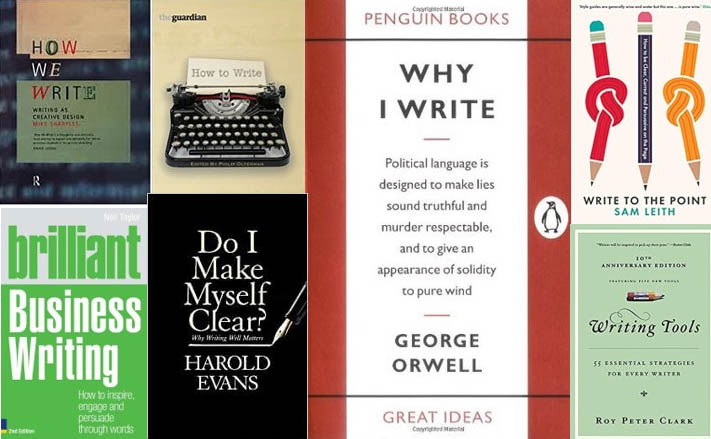
One of the core skills that public relations professionals need to master is writing. Now we can all write – in a fashion. But not everyone can create language that persuades, enlightens and inspires. You can learn how to do it, yet few of have been taught how to. You wouldn’t expect a pianist to be able to rattle out Beethoven sonatas without hours of lessons, or a runner to be able to perform at the Olympics without months of training. Yet some believe that writers are born not made, that they can produce the perfect sentence effortlessly.
Let me put you right. Many of the world’s finest writers – whether novelists, journalists, poets or playwrights – have spent years mastering their craft, yet still agonise over finding the exact words to convey meaning. Some admit to producing garbage in the early years of their career before they mastered their craft. A few have a natural gift for writing, but most have had a long apprenticeship.
Even Shakespeare produced stuff of doubtful quality early in his career.
Are there any ways you can improve your writing, other than constant practice? The short answer is “yes”. During lockdown I have been ploughing through some of the 30 or more books on writing that have sat idle on my shelves for years. There are seven that I think are particularly relevant to people working in PR and communications that have given me a new insight into the craft of writing. Each book has a different approach. I haven’t included some of the classics such as The elements of style by Strunk and Wight because the basics, like sentence structure, vocabulary and punctuation are covered in most of these seven books in different ways already.
So what nuggets have I gleaned?
The first is the importance of writing with clarity. As a PR professional you need to avoid using florid English and academic language. Be economical with words. Use active verbs. Avoid too many adverbs and adjectives. Keep most sentences short (like this one). Don’t try to show off. Plain English is what’s needed.
The second is how to find ways of making language come alive. Tell stories. Use concrete examples instead of vague abstractions. Write as you speak. Don’t obsess over the use of a fronted adverbial or
a split infinitive. Writing punctiliously correct grammar will not make your writing stand out.
The third is always think of your audience. You must understand what they need to know (not what you want to tell them) and what will inspire them. Write as if you are talking to just one person.
And finally, you need to read read read and practice practice practice. Some things will sink in by osmosis, but you should be forensic in your analysis of news stories, features, speeches, advertising copy and much more. Ask yourself “How is this article structured? Does it start with a story or plunge straight into the who, what, why, when and where pattern? Who has been interviewed and how are the quotes used? What is the core message and how is it expressed?” Don’t just skim read. Look at text with the eyes of a detective.
There’s so much more to learn, so here are some more gems from my seven books.
Writing tools. 55 essential strategies for every writer by Roy Clark
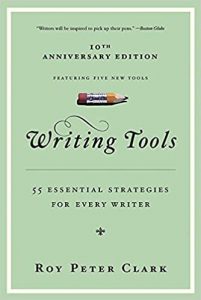 Writing is a craft that can be learned. “You need tools not rules”, says Roy Clark, one of American’s most influential writing teachers. The 55 chapters in his book are stuffed full of advice for both fiction and non-fiction writers. They are divided into four sections. ‘Nuts and bolts’ covers the basics, such as how to activate your verbs, prune your adverbs and give your sentences oomph. ‘Special effects’ provides tools to make your text more original and persuasive. ‘Blueprint’ is all about ways of organising content and crafting stories. ‘Useful habits’ looks at how writers work and think. There are tips such as the difference between reports and stories, matching diction to your writing purpose and how to avoid the ‘inner critic’ in early drafts. Added to that are useful exercises at the end of each chapter. This book will open your eyes and stretch your mind.
Writing is a craft that can be learned. “You need tools not rules”, says Roy Clark, one of American’s most influential writing teachers. The 55 chapters in his book are stuffed full of advice for both fiction and non-fiction writers. They are divided into four sections. ‘Nuts and bolts’ covers the basics, such as how to activate your verbs, prune your adverbs and give your sentences oomph. ‘Special effects’ provides tools to make your text more original and persuasive. ‘Blueprint’ is all about ways of organising content and crafting stories. ‘Useful habits’ looks at how writers work and think. There are tips such as the difference between reports and stories, matching diction to your writing purpose and how to avoid the ‘inner critic’ in early drafts. Added to that are useful exercises at the end of each chapter. This book will open your eyes and stretch your mind.
Write to the point by Sam Leith
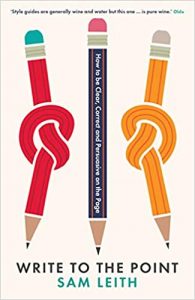 Sam Leith, literary editor of The Spectator and newspaper columnist, begins by attacking what he calls The Armies of Correctness – the ‘prescriptivists’ who quibble over split infinitives and get hysterical over misplaced apostrophes. “Good writing is much more than knowing how to frame a restrictive clause. It has to do with how you get a voice down on paper”, he says. A whole chapter is devoted to understanding your audience and how the brain processes language. The sentence surgery chapter (a “must read”) describes common mistakes in a teasing way. We have ‘the interrupter’, ‘the confuser’, ‘the monitor’ and (my favourite) ‘pomposo furioso’. The final chapter provides advice on tone – how to write a letter of condolence, a complaint, a news report, website text or a job application. The whole book is an easy read, packed full of invaluable tips, written in an engaging style by a top journalist.
Sam Leith, literary editor of The Spectator and newspaper columnist, begins by attacking what he calls The Armies of Correctness – the ‘prescriptivists’ who quibble over split infinitives and get hysterical over misplaced apostrophes. “Good writing is much more than knowing how to frame a restrictive clause. It has to do with how you get a voice down on paper”, he says. A whole chapter is devoted to understanding your audience and how the brain processes language. The sentence surgery chapter (a “must read”) describes common mistakes in a teasing way. We have ‘the interrupter’, ‘the confuser’, ‘the monitor’ and (my favourite) ‘pomposo furioso’. The final chapter provides advice on tone – how to write a letter of condolence, a complaint, a news report, website text or a job application. The whole book is an easy read, packed full of invaluable tips, written in an engaging style by a top journalist.
Do I make myself clear? Why writing well matters by Sir Harold Evans
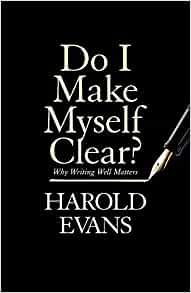 A masterclass in clear writing and editing from the maestro, Evans’ mission is to remove the fogginess from the English language. He rages against misinformation and obfuscation, citing “the fusillade of digital bulletins, reckless words unmonitored, unchecked [and] uncertified”. Examples are instructions that don’t instruct, official documents where the meaning is buried in a labyrinth of meaningless words, waffle dressed up as high level digital content and marketers describing a swimming cap as a ‘hair management system’. (Yes, seriously). The chapter ’Ten shortcuts to making yourself clear’ offers sound advice to any writer. Tips include using the active (not the passive) voice, pruning adverbs and adjectives, varying sentence length and how not to be boring. “Try being a musician in prose,” says Evans. The bonus is that he doesn’t just tell you how to write, he shows you how to do it in forensic detail. You will find before and after examples showing how to make sense of gobbledegook where the core message has become hidden in ‘fog. ”Buried treasure. It’s yours, but words get in the way,” says Evans. Wise counsel.
A masterclass in clear writing and editing from the maestro, Evans’ mission is to remove the fogginess from the English language. He rages against misinformation and obfuscation, citing “the fusillade of digital bulletins, reckless words unmonitored, unchecked [and] uncertified”. Examples are instructions that don’t instruct, official documents where the meaning is buried in a labyrinth of meaningless words, waffle dressed up as high level digital content and marketers describing a swimming cap as a ‘hair management system’. (Yes, seriously). The chapter ’Ten shortcuts to making yourself clear’ offers sound advice to any writer. Tips include using the active (not the passive) voice, pruning adverbs and adjectives, varying sentence length and how not to be boring. “Try being a musician in prose,” says Evans. The bonus is that he doesn’t just tell you how to write, he shows you how to do it in forensic detail. You will find before and after examples showing how to make sense of gobbledegook where the core message has become hidden in ‘fog. ”Buried treasure. It’s yours, but words get in the way,” says Evans. Wise counsel.
Brilliant business writing by Neil Taylor
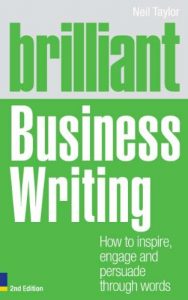 Neil Taylor, creative director of copywriting agency The Writer has spent much of his career training people to be better writers. His aim is to take business writing from just doing the job into something
Neil Taylor, creative director of copywriting agency The Writer has spent much of his career training people to be better writers. His aim is to take business writing from just doing the job into something
that’s brilliant by making it clear, natural, interesting and magical. Unlike some of the other books on my list this one is less about journalism and more about copywriting in the business world. Taylor shows you how to paint a picture with words, get rid of jargon and tell a story to make a brand come to life. Write as you would speak, he says. Full of examples from the world of business and brands he shows how to inject colour into dull products and services and create magic with words. A thoroughly entertaining read, brimming with personality that tackles gobbledegook and verbosity with panache.
How to write edited by Philip Olterman
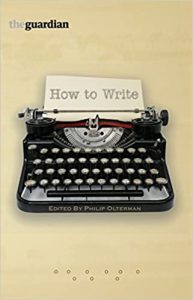 Published by The Guardian, this book is a series of articles by acclaimed writers in their genre, covering fiction, memoir and biograph, journalism, plays/screenplays and comedy. There is also a useful A-Z of style terms. Rather than read it from cover to cover this book is one that you should just dip into. Although all sections are useful the one on journalism is the most relevant for PR professionals as we all need to develop journalistic skills. Simon Jenkins, former editor of The Times and the London Evening Standard, sums these up as an intense curiosity about the world (which is largely instinctive) and being able to write clear and succinct sentences (which can be taught). There is plenty of useful advice throughout. Use language that is specific emphatic and concise. Keep it simple. And write as if you are talking directly to someone.
Published by The Guardian, this book is a series of articles by acclaimed writers in their genre, covering fiction, memoir and biograph, journalism, plays/screenplays and comedy. There is also a useful A-Z of style terms. Rather than read it from cover to cover this book is one that you should just dip into. Although all sections are useful the one on journalism is the most relevant for PR professionals as we all need to develop journalistic skills. Simon Jenkins, former editor of The Times and the London Evening Standard, sums these up as an intense curiosity about the world (which is largely instinctive) and being able to write clear and succinct sentences (which can be taught). There is plenty of useful advice throughout. Use language that is specific emphatic and concise. Keep it simple. And write as if you are talking directly to someone.
How we write. Writing as creative design by Mike Sharples.
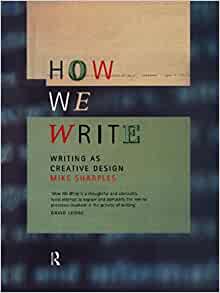 This book is very different from the others as it focuses on the psychology of writing – how writers think, plan and structure their work. Written by a professor of educational technology it explores how people learn to write, the thought processes that writers go through, the reasons why writing makes many people anxious and what you can do about it. Almost a whole chapter is devoted to classical rhetoric – the language of persuasion and rational thought. But the most illuminating chapter describes different approaches to writing, using the language of designers. Some start with free writing where ideas tumble onto the page (or more likely the screen) in a jumble. (Oil painters). Others plan carefully before writing. (Architects). Or maybe they like to build up a piece of work sentence by sentence. (Bricklayers). Which one are you?
This book is very different from the others as it focuses on the psychology of writing – how writers think, plan and structure their work. Written by a professor of educational technology it explores how people learn to write, the thought processes that writers go through, the reasons why writing makes many people anxious and what you can do about it. Almost a whole chapter is devoted to classical rhetoric – the language of persuasion and rational thought. But the most illuminating chapter describes different approaches to writing, using the language of designers. Some start with free writing where ideas tumble onto the page (or more likely the screen) in a jumble. (Oil painters). Others plan carefully before writing. (Architects). Or maybe they like to build up a piece of work sentence by sentence. (Bricklayers). Which one are you?
Why I write by George Orwell
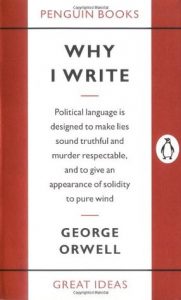 You might wonder what value a book written in the 1940s has in today’s world of soundbites and clickbait.
You might wonder what value a book written in the 1940s has in today’s world of soundbites and clickbait.
You will be surprised at how much of what Orwell wrote 75 years ago is still relevant today.
No wonder Harold Evans, on the first page of his book, quoted Orwell’s indictment of bad English for thought and slovenly thought for corrupting language.
Orwell asserts that writing good English is nothing to do with correct grammar or syntax unless the meaning is clear.
His six golden rules are classics that every writer should adhere to.
- Never use a metaphor, simile, or other figure of speech which you are used to seeing in print.
- Never use a long word where a short one will do.
- If it is possible to cut a word out, always cut it out.
- Never use the passive where you can use the active.
- Never use a foreign phrase, a scientific word, or a jargon word if you can think of an everyday English equivalent.
- Break any of these rules sooner than say anything outright barbarous.
That’s it folks. Happy reading. And happy writing.